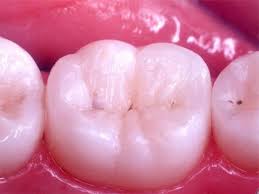Tooth fillings.
Dental filling is a specific dental procedure to fill an empty space in a tooth; most of times, holes in tooth are caused by cavities, a decay of the tissues of the tooth due to a bacterial infection; otherwise, dental filling can be used to fill little cracks of the enamel, if the tooth is strong enough to not need a crown.
Of course dentists suggest to prevent these kind of tooth damages, with an appropriate oral care, going regularly to the dentist and with a healthy diet; but when dental filling is necessary, different materials are available to protect teeth from further damage and return them their original shape and functionality.
 Dental fillings. Different materials used.
Dental fillings. Different materials used.
Dental fillings may be direct, the dentist apply them in one visit, or indirect, when they’re made in dental laboratories.
The traditional filling material is amalgam, or silver fillings: amalgam is a direct filling, it’s a mixture of silver, tin, zinc, copper and mercury (nearly 50% of the mixture) and its advantages are durability (more than 10 years), strength and price, since it is the less expensive material.
Dental amalgam.
On the contrary, amalgam is not very aesthetic and it’s most used for molars and premolars, it does not hold together with tooth and the dentist may have to remove more of the tooth to create a pocket.
Composite resins are a mixture of plastic and fine glass particles; this material match the colour of the enamel, is applied on front teeth and can be employed for direct and indirect fillings; it is also used for inlays. Its advantages lie in the color, then composite resins bond to the tooth and dentist has to remove less tissue, but they cost more than amalgam and last less. Composite resins may shrink, producing gaps between the tooth and the filling and lead to more cavities.
Cast gold fillings are made up of gold and other metals, it’s used for inalys, onlays and crown, is the most durable, strong and expensive.
Dental filling materials. Glass ionomer.
Other materials used for dental fillings are ceramics and glass ionomer. Ceramics are made of porcelain are more resistant than composite resin material and can last more than 15 years, but may cost as much as gold.
Glass ionomer is made of acrylic and a specific type of glass material, it’s most used for fillings below the gum line and for fillings in young children; this material is weaker than composite resin and is more susceptible to fracture. Glass ionomer generally lasts five years or less, with costs comparable to composite resin.




